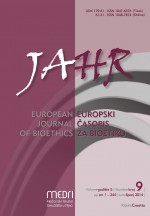Različiti pristupi u sustavu potpore u visokom obrazovanju za gluhe i nagluhe studente
Keywords:
gluhi i nagluhi studenti, potpore u visokom obrazovanjuAbstract
There are important differencies between deaf and hard of hearing people in the way they communicate and learn so their needs in high education are different. Deaf people cannot understand spoken messages through hearing alone and many of them cannot develop clear spech. They use sign language as they first language. Hard of hearing people have some usable hearing and they can comprehend speech to some extent with or without a hearing aid. Their knowledge is better but they also have difficulties in folowing the lecturess and coping with fast comunication.The deaf and hard of hearing students can learn any topic as well as any other hearing student. But, to achieve that, it is important that topic is explained in the way it can be understood. This presentation provides insights on basic communication skills of deaf and hard of hearing students. It is presented how deaf and hard of hearing students communicate, how they learn and what are their needs in high education. Few different communication modes are demonstrated: use of sign language interpreter, FM apparatus and real-time captioning.
Downloads
Published
Issue
Section
License
Authors who publish with this journal agree to the following terms:
- Authors retain copyright and grant the journal right of first publication with the work simultaneously licensed under a Creative Commons Attribution License that allows others to share the work with an acknowledgement of the work's authorship and initial publication in this journal.
- Authors are able to enter into separate, additional contractual arrangements for the non-exclusive distribution of the journal's published version of the work (e.g., post it to an institutional repository or publish it in a book), with an acknowledgement of its initial publication in this journal.
- Authors are permitted and encouraged to post their work online (e.g., in institutional repositories or on their website) prior to and during the submission process, as it can lead to productive exchanges, as well as earlier and greater citation of published work (See The Effect of Open Access).



